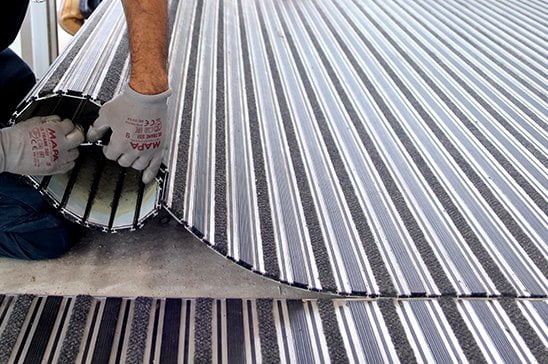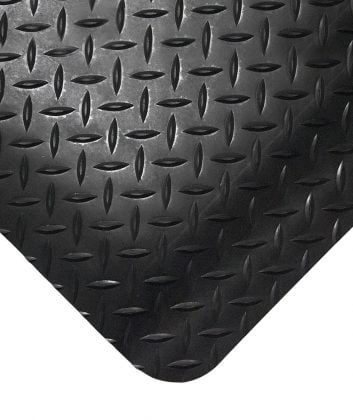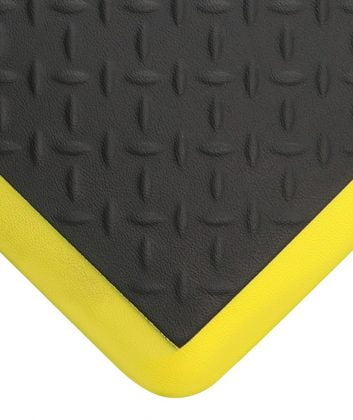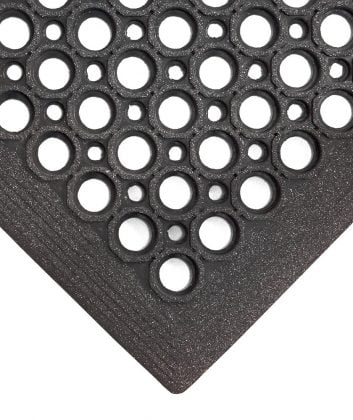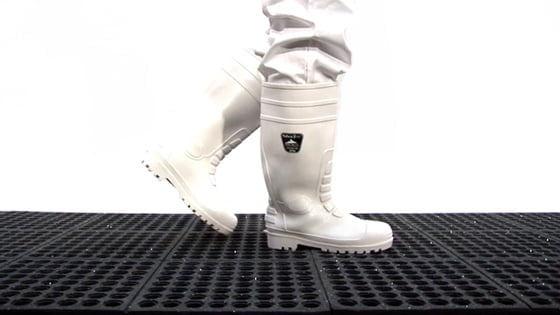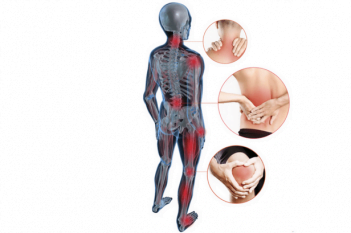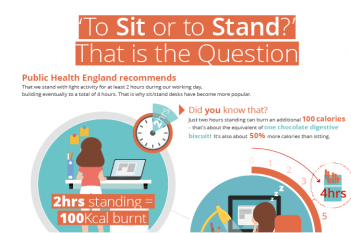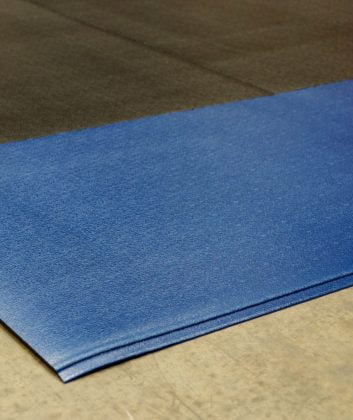The Impact of Standing

What is the impact of standing for long periods?
Regular prolonged standing on hard floor surfaces can create pain and discomfort, and if ignored, can have long-term health implications. It can damage joints, cause swelling of the legs and lead to problems in the feet including bunions, corns, Achilles tendonitis and other orthopaedic conditions.
Standing affects our circulatory system which is responsible for moving blood throughout the body. It makes the heart work harder and puts increased pressure on the walls of the veins. Varicose veins and other similar venous disorders can have more dangerous consequences increasing the potential for heart attack and stroke.
As tiredness creeps in, joints such as the ankles and knees can tense up and become locked. There is a tendency to shift weight from one side to the other increasing the release of muscular energy which leads to physical fatigue. Regular prolonged standing in a static position can slowly diminish elasticity in the soft tissues (muscles ligaments and tendons in the back). This degenerative damage can lead to rheumatic diseases.
There has been much research over the years into reducing fatigue from standing and in particular into the benefits of certain types of floor coverings such as anti-fatigue matting.
What are work-related MSDs?
MSDs are usually put into two categories: Upper MSDs and Lower MSDs. To quote from information published by the European for Safety and Health at Work: “The World Health Organisation has defined a work-related disorder as one that results from a number of factors, and where the environment and the performance of the work contribute significantly, but in varying magnitude, to the causation of the disease. The term musculoskeletal disorders (MSDs) denote health problems of the muscles, tendons, the skeleton, cartilage, the vascular system, ligaments and nerves.”
What is the function of circulation and The Venous System?
We all know that our bodies should have healthy circulation but how is the blood circulated around the body?
Think of the heart as the central pump in the circulatory system. With each beat, the heart pumps the blood through the vessels which transport oxygen and nutrients to all tissues and arteries of the body. Oxygenated blood leaves the left side of the heart. The arteries carry the blood away from the heart and the veins return the blood back up to the heart. In order for the blood to be transported back, the venous return pumps the blood back to the heart. The main venous return pump is in the calf muscle. The foot also has many complex tiny veins. Veins in the legs have one-way valves to help blood flow back to the heart against the force of gravity. The blood pushes through the valves towards the heart and then the valve closes to prevent backward flow. With each step that we take when we walk, the foot and calf muscles contract which forces the blood up through the venous system against gravity back up to the right hand side of the heart.
That is why when we stand, we subject the walls of our veins to increased pressure which can cause long-term damage. When standing still, gravity makes fluid settle in the feet and legs which can create pooling and swelling. The heart has to increase its beat rate to compensate for this.
Research into venous pressure on a sample of workers found that the pressure when seated was 56mmHG, while the pressure for standing was 87mmHG. The pressure dropped to 21mmHG after taking around 10 steps concluding that walking for two to four minutes a day after every 15 minute period of standing was more comfortable than standing without walking (Konz S, Johnson S, Work Design 1-629, 2000).
How does Anti-Fatigue Matting help?
Anti-fatigue matting is more than just a comfortable standing surface. The cushioning helps to promote regular foot movement as the feet naturally adapt to the ‘flexible’ surface of the mat. The movement of muscles contracting and expanding is very subtle indeed, but is enough to help circulate blood towards the heart without expending so much energy as that experienced on a concrete floor.
Prolonged standing ultimately leads to pressure on the bony plantar (sole) of the feet which causes shifting of the weight. An anti-fatigue mat helps to reduce the concussion and distributes the pressure over a greater surface area. This reduces muscle activity and in turn fatigue.
Thermal comfort is another aspect of anti-fatigue matting as blood circulation is affected by extremes of temperature. Anti-fatigue mats protect operatives from cold concrete floors.
Anti-fatigue mats can reduce, and even prevent in some cases, the health risks associated with prolonged standing. For many standing jobs, anti-fatigue matting is a health and safety necessity, rather than a luxury.
Anti fatigue mats for standing on concrete:
See our full range of anti-fatigue mats to suit a wide range of working environments and needs.
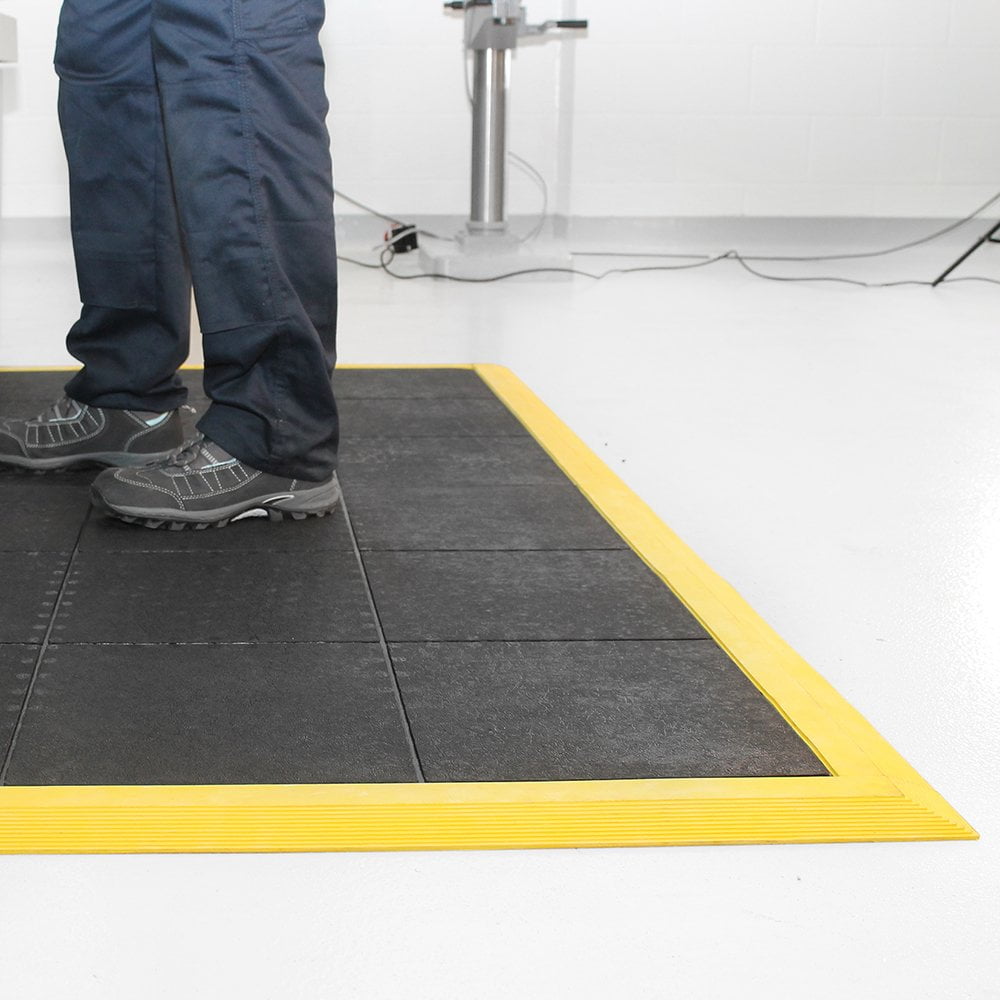
Scientific Evidence
A scientific study commissioned COBA Europe Ltd and conducted by Loughborough University emphatically confirmed that anti-fatigue mats can significantly increase comfort to workers who stand for prolonged periods of time and also help to reduce fatigue.
The study carried out by Professor George Havenith and Lucy Dorman from the Department of Human Sciences used 14 independent participants. Using objective and subjective measures, the study compared thermal comfort and fatigue when standing on floor matting samples to that experienced when standing directly on concrete.
Test methods included infrared thermal imaging, body temperature sensors, calf circumference measurements and cognitive testing. Participants were provided with the same test clothing and conditions, standing on eight different anti-fatigue mats supplied by COBA Europe.
The subjective results showed statistically significant benefits to users of anti-fatigue mats when compared to standing on a concrete floor. After just 90 minutes, both thermal and postural comfort benefits (in particular to the legs and lower back areas) were experienced and levels of fatigue were reduced. Therefore, it could be concluded that the longer the anti-fatigue mats were used, the more beneficial they would be.
Which occupations are most at risk of standing fatigue?
These occupations where standing is required for majority of their working day are most as risk of standing fatigue:
- Production/Assembly Line Workers
- Engineers
- Machine Operators
- Retail Staff
- Teachers
- Healthcare Workers
- Postal Sorting Offices
- Catering Staff
- Hairdressers
Statistics
An estimated 439,000 workers in 2011/12 suffered from MSDs caused or made worse by their current or past work. Approximately 176,000 of these workers suffered from a bad back; 177,000 from problems relating to upper limbs and neck, and in the region of 86,000 with lower limb problems. It is estimated that 7.5 million working days were lost in 2011/12 through work-related MSDs. On average, each person suffering took an estimated 17 days off in 2011/12.
(Source: Health and Safety Executive)
How to choose the right anti-fatigue matting?
A reputable manufacturer or supplier will be able to advise on the most suitable anti-fatigue matting for a specific location, so it is worth seeking knowledgeable guidance from the outset. Mat thickness and compression level will both play their part in anti-fatigue performance. Comfort can also be subjective so this can vary from person to person. There are quite a few considerations that should be taken into account during the specification stage of purchasing anti-fatigue matting.
Is the area prone to spillage, such as liquid or debris?
If so opt for products with open drainage holes such as Fatigue-Step Tiles. Any design that leaves liquid residue on the surface will present a slip hazard.
Anti fatigue mats ideal for wet workplace environments:
Our MatBrain™ tool has been created to help you quickly search through more than 100 matting solutions based on the specific requirements of yours, or your customer’s workplace.

Can anti fatigue mats cope with aggressive oils or chemicals?
The short answer is yes, but you would need to look at the technical specifications to see to what degree of chemicals and oils the specific mat can withstand.
Matting that is manufactured from 100% nitrile is the best choice as it can withstand these conditions. Fatigue Step Nitrile or Fatigue-Step Grit Top both perform well in this sort of environment.
Can fatigue matting withstand regular turning?
Some of the ‘bubbled surface’ anti-fatigue mats, such as COBAelite, are ideal for this sort of area. They are made from tough polyurethane and can withstand this type of movement better.
talk to one of our experts to assist you with choosing the right mat the first time to ensure that your matting solution can withstand the conditions of your site while looking at the best solution for your budget.
Our team of experts are always ready to assist.
We offer free site surveys, to help you choose the right anti-fatigue matting for your environment first time.

What is the most suitable anti-fatigue matting for a welding area?
Matting needs to be selected carefully and must be flame-retardant. Some products such as Diamond Tread have a tough flame-retardant top surface and a foam backing for comfort.
When choosing an anti-fatigue mat for a welding area always check the technical specifications to see what the matting solution can withstand before purchasing the incorrect solution for your site. Our team of experts are happy to provide you with the matting solutions that would be suitable for your site. You can book a free site survey with us online or in person.
How many people are standing or walking on the matting on a regular basis?
some anti-fatigue mats can withstand more traffic than others, choosing the correct one can be tricky if you don’t know what to look for. A standing desk mat in an office doesn’t need to have the same capabilities as a heavy duty anti-fatigue mat in the warehouse were a few people might be moving around on the matting.
Establish just how durable your anti-fatigue matting needs to be; choosing an unsuitable product can be costly. There are many heavy-duty products available, Orthomat® Premium with its double-layer construction offering the ultimate in comfort and durability.

What style of matting best suits the workplace layout?
Decide on whether this is rolls of matting installed in long lengths, single workstation mats or interlocking tiles or modules. Tiles allow for fitting around more unusually shaped workstations.
Here are a few favourites:
- If you are in an office space and aesthetics are important to you, perhaps the Alba anti-fatigue matting solution is a good option to consider.
- If you are in an office space, but don’t really care for a carpet finish and just want an anti-fatigue mat that works the Orthomat Office is a good option to consider
- Perhaps slipping is also a major concern along with anti-fatigue, then the Fatigue-step grid top might be best for your site
Does the matting need to be moved or relocated?
Tiles or workstation mats are easier to handle. Moving a roll of anti-fatigue matting might be a bit more difficult. If relocating your matting might happen on a regular basis or you know that there might be a move in the future perhaps go with a loose-laid anti-fatigue mat instead.
The interlocking option is also a solution for more mobility as it can easily be clipped apart moved and clipped back in. The interlocking options were designed for fast and easy installation, making them the ideal solution.
Here are a few interlocking options:
Are there anti-fatigue mats that are not quite so ‘industrial’ looking?
Anti-fatigue mats don’t have to be plain black or grey! There are Marble-effect anti-fatigue mats which are ideal for Retail environments, and Orthomat® Premium for example, also comes in blue or green.
How to please your team?
COBA Europe advises that companies let their workers try a variety of mats and usually there is a consensus of opinion as to which one is best for that particular environment.
Make your plan to Stand Up in the Workplace
It’s imperative to identify potential risks in the workplace and subsequently endeavour to eliminate as many as possible. Avoid bending or twisting as much as possible, and when installing anti-fatigue mats ensure they are large enough and suitable for the job in question. There are a number of tools available from the Health & Safety Executive to help management fulfil this. Ensure workers are trained to recognise that discomfort can ultimately lead to chronic injury.
Whether sitting or standing, regular breaks and changes in posture should be adopted in the workplace at set intervals. It is generally recommended that regular short breaks are more beneficial than fewer longer breaks. Where possible, work should be planned so that individuals have to frequently change tasks or posture.
As well as anti-fatigue matting, other factors should be considered such as footwear and workstation layout. The best footwear and safety matting should also be considered to avoid fatigue and inflammation of the plantar fasciitis when running and exercising outside of work.
Good communication and training are key drivers to effective Health and Safety in the workplace. A healthy workforce is a happy and productive workforce.
Find out more about how anti fatigue matting works in our explainer video:


